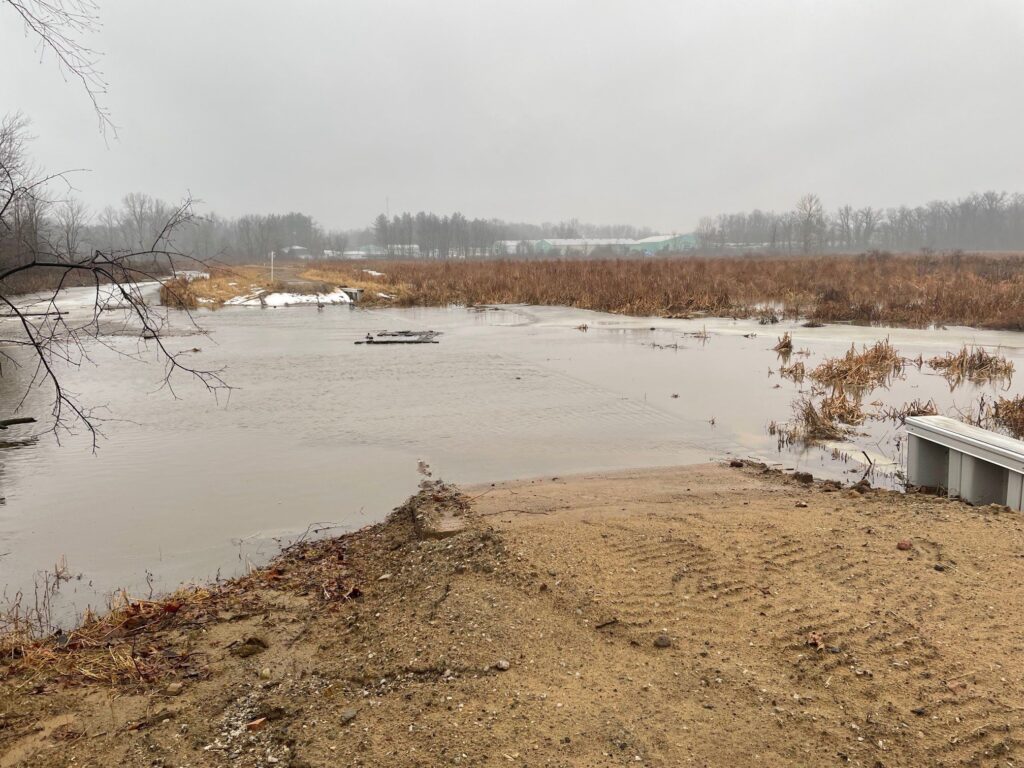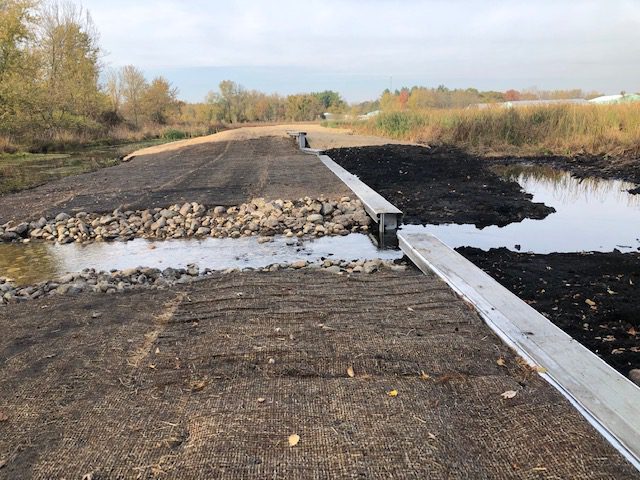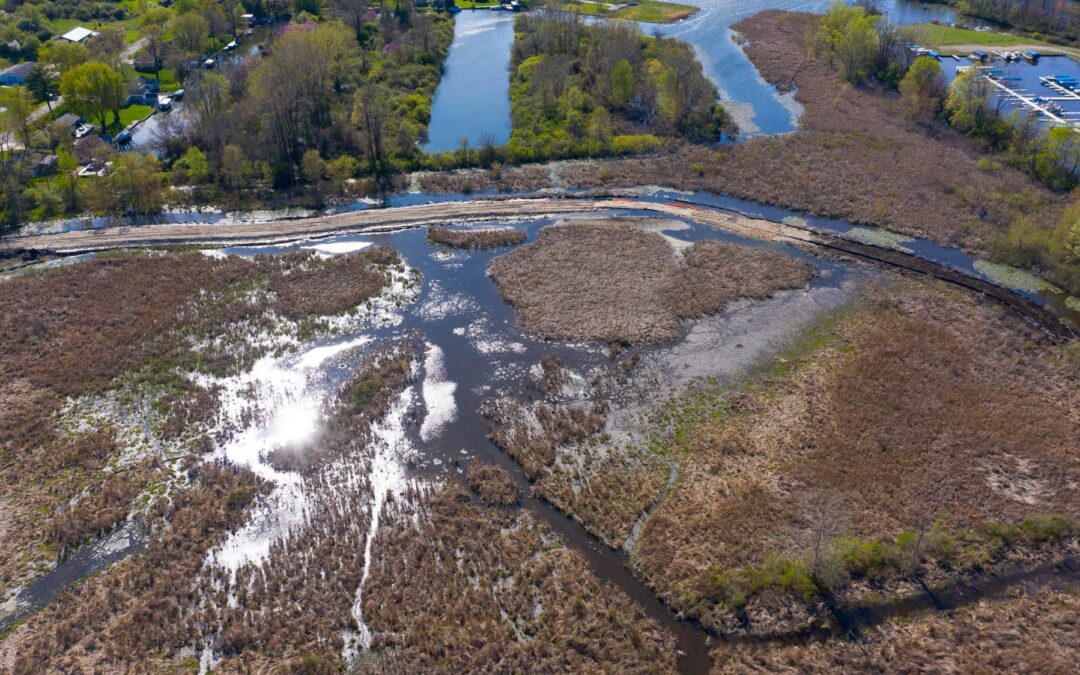Photo courtesy of Jim Haist
As most of you are aware, the Kline Levee was built in 1992 to prevent sediment and pollutants from moving from the Kline Wetland and surrounding watershed into the lake during storm events and periods of high water. Having outlived its predicted lifespan by several years, a reconstruction project was begun in the fall of 2019 and construction was complete in the fall of 2020.
Thousands of native pollinator plants were installed as part of the project, and we are quite pleased with the survival rate. Within a few years the levee will be a beautiful, thriving habitat for many of our important pollinators. LMEF has already hosted a few education events on site and anticipate many more once the plants begin to mature.

While the opportunity for workshops and field trips is exciting, I was even more excited to see this picture (left) forwarded to me by Chris Kline following last week’s rain and snow melt.

This is what it looked like immediately after construction (right). All of this is under water in the photo at left.
zp
The previous outflow, or spillway, was small and narrow. It severely constricted water flow, which in turn put pressure on any weak points in the levee and backed up water upstream.
When there is too much water, it has to go somewhere!
By designing a large spillway, this allows the water to move more quickly from upstream, through the wetland and into the lake. This takes pressure off the ditches and the land adjacent to the ditches upstream.

Here’s a great analogy I found online talking about household drains:
Think of your drains like a river and its tributaries. Smaller streams (secondary sewer lines) converge and form one large river (your main sewer line). If your main sewer line becomes clogged, even partially, it can cause backups in all your smaller sewer lines, like those connected to your toilet and shower.
P
Thanks to the collaboration of many partners; individual, civic, philanthropic and government, the Kline Levee is a valuable asset in the watershed for many years to come.
“Working toward the preservation of an ecologically sound Lake Maxinkuckee and its surrounding watershed.”

Hi, I’m Debbie Palmer. I received a BS in Horticulture from Purdue University. Here at LMEF, I am responsible for outreach presentations, monitoring the lake and it’s wetlands, project manager for restoration and research projects, and act as a community resource for all things related to the well-being of Lake Maxinkuckee and its surrounding watershed. I completed Indiana Watershed Leadership Academy, volunteer with the Indiana Clean Lakes Program, Hoosier River Watch and Marshall County Lakes and Waters and serve as a Board Member for Indiana Lakes Management Society.


Recent Comments